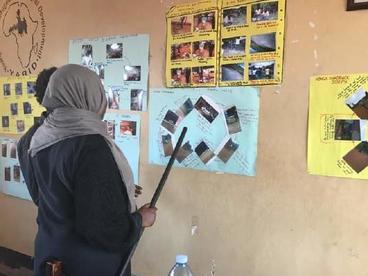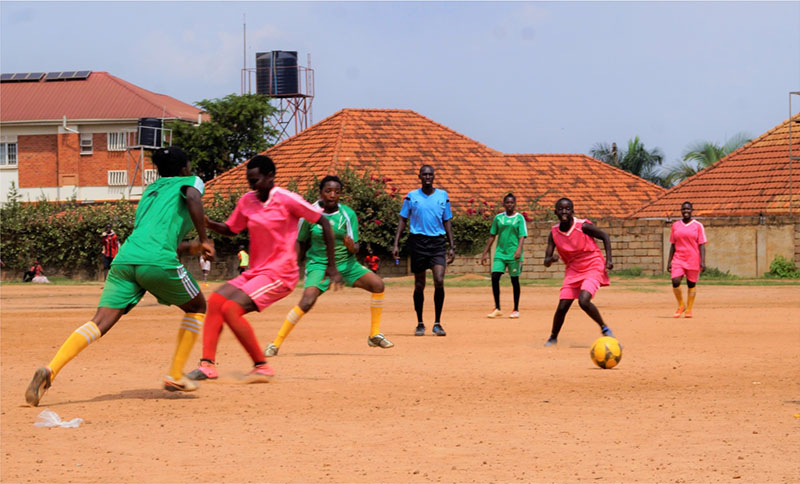Sports are often looked at as just a way to have fun and get some exercise. But they can actually be used to help achieve international development goals, such as eliminating poverty and promoting gender equality, according to research from the sport for development field.
The field has blossomed in the past 20 years, according to Mitchell McSweeney, an assistant professor of sport management in the School of Kinesiology. In sport for development, activities like soccer, rugby, or even bicycling are used to attract marginalized communities, particularly youth, to programs that focus on development themes such as poverty or conflict resolution. Sport is also used alongside more formal education, either on the playing field or in classrooms.
McSweeney’s research focuses on how sport for development organizations strategize, particularly using entrepreneurship, and how sport for development can challenge or perpetuate existing inequalities.
He gave the example of a program in Uganda in communities with persistent gender inequality, where reports of domestic violence and sexual harassment are common, that teaches young women and girls taekwondo.
“The program is not only to try and resist domestic violence and sexual harassment, but also to create a sense of resistance,” McSweeney said. “Having women and young girls engage in taekwondo to say ‘I am physically strong. I am able to fight back.’”
Other programs take more of a community-based approach, bringing boys and girls together to play soccer, and at the same time, learn about the rights of women.
“Having this community approach doesn't just place the responsibility on the women to address gender-based violence,” McSweeney said. “It also brings in those young men and boys too to educate them.”
Empowerment through sport
Much of McSweeney’s recent research has focused on refugee populations and how sport can affect their wellbeing.
“In my work in Uganda with refugees, one thing that kept coming up was the importance of emotions — particularly this emotional transformation,” McSweeney said.
He explained that refugees often report being lonely, feeling shamed or excluded by local community members, and missing their families.
“Something as simple as having an hour a day involved in almost a stress-free environment, where they’re having fun, they’re building relationships with both local community members as well as other refugees….The sport itself enables this emotional transformation.”
Sport also gives refugees an opportunity to be mobile in a way they choose, instead of the forced movement often associated with those who flee their country.
“In sport they have a sense of control, of autonomy,” McSweeney explained. “They have control over the movements they’re making. They make decisions when they want to participate, having control over their lives in some sense, whereas in previous situations, they might not have.”
A bottom-up research approach
Agency is key to McSweeney’s work, including in his research methods. He takes a participatory action research approach and works to partner with local organizations and host communities.
“When this field emerged, there was a lot of criticism of Western actors funding all these programs, and a lot of issues with the top-down approach saying ‘Here are the problems that we want to focus on, and here are the solutions that we’re going to come up with,’” McSweeney said. “The research that I’m doing really tries to invest in a bottom-up, local community-oriented approach to not only reduce those power dynamics in research but also in sport for development itself.”
One way he has worked to give local communities the power to inform his research is by using visual and digital methods to gather information. He provided research participants with cameras, and the participants then came back and narrated their experiences using the photos they captured.
“This takes away the power of the researcher to guide the research,” McSweeney said. “In a classic interview, I would come up and give you the questions. Instead, we’re giving them the camera and saying you go and tell us what you want to tell us. What do you want to emphasize about sport for development?”

Another method involves participants creating photo collages, then gathering as a group and sharing their experiences through the collages they created.
“They connect with the other participants, building again the sense of community to say ‘This is the impact of sport for development. These are some of the challenges we’re facing in our daily lives.’” McSweeney explained. “That’s actually a form of preliminary collaborative data analysis, letting the participants be involved in even research interpretation.”
He emphasized that there are many different types of programs and ways that sport can contribute to development goals, but it is important to consider what the local community wants when it comes to development.
“Who is defining development? Why is that important to the actual people who are so-called needing this form of development?” he asked. “A really collaborative approach and participatory work is needed. We don’t want to perpetuate structures of inequality through sport for development.”
